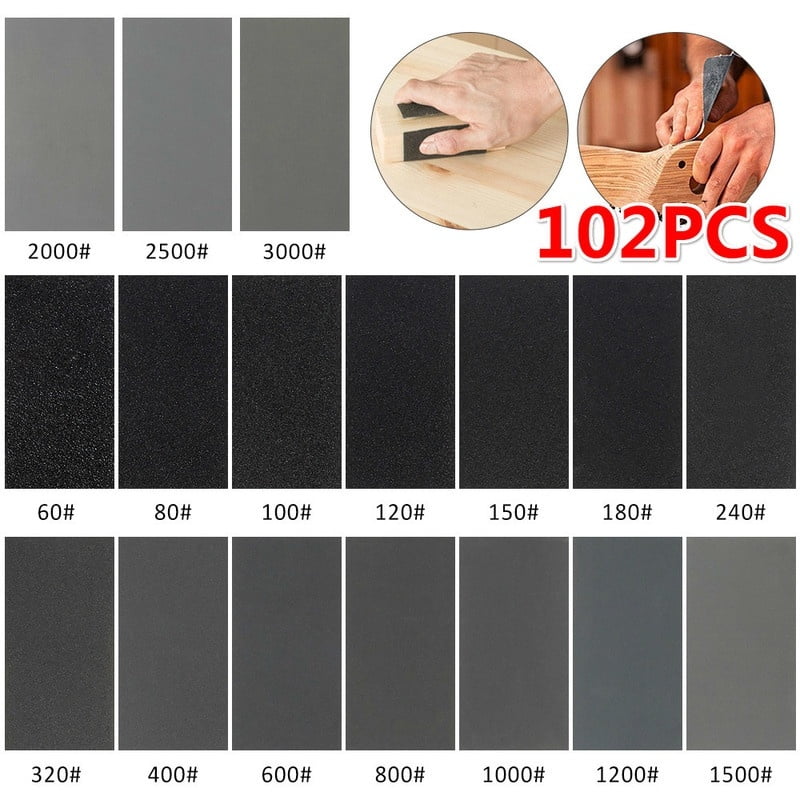

While there are too many grit gradations to list, if you’re buying FEPA-sized sandpaper, the following commonly used CAMI sizes will give you an idea of the corresponding FEPA sizes. Grit sized with the FEPA scale is indicated by the letter “P” preceding the grit number. Most sandpaper you buy at DIY centers and lumberyards will bear the CAMI scale, but if you order sandpaper online, you may run across sandpaper grit sized by the Federation of European Producers of Abrasives (FEPA).


The small grains on the sandpaper measure approximately 141 microns in size, which is equivalent to. On the CAMI scale, sandpaper grit is measured in microns, and to get an idea of how small a micron is, check out a piece of 100-grit sandpaper.

And, conversely, lower numbers indicate larger grains and overall coarser sandpaper.The higher the number, the smaller the grains and the finer the sandpaper grit.When shopping for sandpaper, you’ll see numbers such as 80-grit, 100-grit, or 200-grit. In the United States, grit is determined based on a gradation scale established by the Coated Abrasive Manufacturers Institute (CAMI). RELATED: 9 Clever Alternative Uses for Sandpaperĭistinguishing sandpaper grit sizes is important because not every project requires the same. The particles (also known as grains or grit) are sifted through screens and sorted by size before being bonded with adhesive to a paper, sponge, or cloth-type backing to create an abrasive material that’s handy in a number of do-it-yourself situations. Sandpaper isn’t made of sand, of course, but rather it consists of fine particles from either natural or synthetic sources.
5000 grit sandpaper pro#
Finding the right tool for the easiest effort.Īfter you have a few completed projects under your belt, you’ll be an old pro at picking just the right sandpaper.Considering the best type of grit to choose, and.Choosing the appropriate coarseness for the project,.Selecting the right size of sandpaper grit,.Warm up with these basic recommendations and rules of thumb. Which did this project call for again?ĭifferent sandpaper grits perform very different jobs, and selecting the right grit can be confusing when you’re starting out. Seeing sandpaper on a tools and materials list may seem easy enough to check off-until you hit the hardware store and face stacks of sheets and booklets, each distinctly identified with a different set of numbers, or sandpaper grits. Each time you advance to a higher grit sandpaper, you remove the scratches from the previous layer.If you’ve ever worked with wood, you’re likely familiar with instructions to sand all edges after cutting: before applying a finish, between coats of paint, and so on. Many jobs require you to “go through the grits.” This means you start the project using lower-grade grit and use finer pieces of sandpaper as you progress. For finishing surfaces smoothly, use a super fine sandpaper with 360- to 600-grit. For heavy sanding and stripping, you need coarse sandpaper measuring 40- to 60-grit for smoothing surfaces and removing small imperfections, choose 80- to 120-grit sandpaper. You need to choose the grit size of sandpaper depending on the particular job you are trying to accomplish. Open-coated sandpaper has gaps between the grits, allowing sawdust to gather so it doesn’t interfere with the sanding, whereas closed-coated sandpaper doesn’t have those open spaces. The density of the grit is important, too. The larger the grit size, the more edges there are and the smoother the sandpaper. In addition, sandpaper is measured by its grit size, or number of sharp particles per square inch of sandpaper. Industrial-grade sandpaper uses higher quality materials than commercial grade but is only available in specific stores. Different grades of sandpaper represent the difference in quality of the abrasives, the backing material and the bonding agents. The abrasive edges are glued onto backing material such as Kraft paper with a bonding agent. Sandpaper contains numerous sharp edges that cut away at wood or metal.


 0 kommentar(er)
0 kommentar(er)
